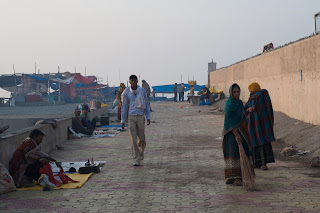- Used to be a great location for shooting songs for Indian romantic films
- Nice train stations, and vast green fields
- Swatch
Switzerland also triggered the memory of a happy encounter with a Swiss couple on our engagement trip to India. My wife and I were returning from a short stay at a Jungle resort hotel near Ooty in India. We took the Nilgiri Passenger Train from Ooty to Mettupalayam in India. Boarding on a Indian train in the unreserved compartment is very chaotic, and seats in this train could not be reserved. While we were boarding the train, I saw two Caucasian tourists boarding as well. It interests me when I see a tourist in India because tourists to India are not your usual the trigger-happy ones. They are like the travelers we hear in the stories of the past, messengers from other cultures. Naturally, I try to make it a point to say hello to tourists in India, and force a conversation. They always something interesting to say about India. And luck would have it, this couple sat opposite us.
I looked at them, how they were dressed - loose cotton baggy pants. Their possessions indicated they have been travelling for a while. As I started analysing them, something yanked me out of the imaginary world of my mind to the real one - a tiff between some folks in our compartment. They were arguing (quite loudly) about who got to the seat first. Before boarding the train or bus, one of them threw a handkerchief on to a seat on the bus to signal seat reservation (this often happens in India). The other person denied that reservation. Thus, the arguments. More people joined in, and getting chaotic. I turned to my fellow tourists and said "Welcome to India!". They laughed, looked relieved (probably because they knew that they were not the only one to call the situation crazy). From then on, we had a natural flow of conversation. It turned out that they were from Switzerland. I thought about why a Swiss would come to see a culture that is its mirror image. By the time our train reached Mettupalayam, our "driver brother" was waiting outside the station. Our new-found friends were looking for directions to go to the nearby city of Coimbatore, which was on our way to home. So we gave them a ride to Coimbatore. We reached Coimbatore, had dinner together, and as we dropped them off on really busy street, the power had gone. The usual Indian traffic chaos suddenly looked deadly. We quickly said our goodbyes, and they asked us to visit them in Switzerland. When I thought of Switzerland, I thought about them.
I remembered that an old friend of mine from high school in Mauritius, who now lives in Switzerland. I thought about meeting him, and see how life experiences has changed him after a 12 year gap.
Along with my wife's excellent sales pitch to go to Switzerland, Switzerland was locked in as the destination for our honeymoon.
















































